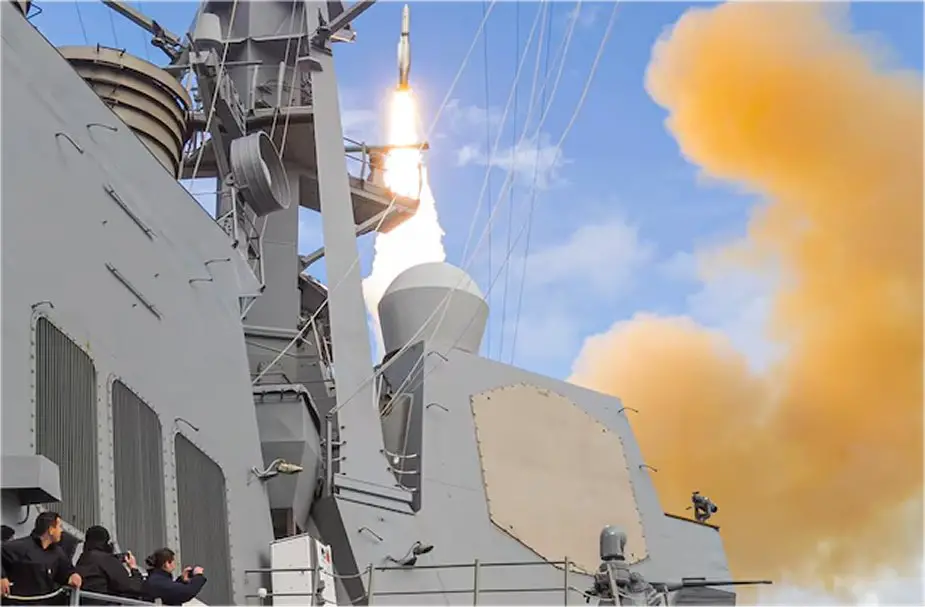Breaking news
US Navy achieves new milestone with Virtualized Aegis Weapon System on USS Winston S. Churchill.
According to information published by the US DoD on April 24, 2024, the Arleigh Burke-class destroyer USS Winston S. Churchill (DDG 81) recently accomplished a key test of its capabilities by intercepting an air target using a fully virtualized Aegis Combat System. This event occurred during the ship's final phase of Combat System Ship Qualification Trials.
Follow Navy Recognition on Google News at this link
 Arleigh Burke class destroyer USS Winston S. Churchill firing SM-2 missile. (Picture source: US DoD)
Arleigh Burke class destroyer USS Winston S. Churchill firing SM-2 missile. (Picture source: US DoD)
Following its initial deployment in July 2023, the system is scheduled for expansion to other ships, including the USS Lenah Sutcliffe Higbee (DDG 123) and additional vessels and land-based test sites in 2024.
About the system
The Aegis Weapon System has evolved into the Virtualized Aegis Weapon System, reflecting a shift towards integrating virtualization technologies to adapt and streamline naval combat systems.
The Aegis system, developed by the United States Navy, is a robust naval weapons system that utilizes powerful computers and radars to track and guide weapons to destroy enemy targets.
Traditional components like the AN/SPY-1 radar, the MK 41 Vertical Launching System, the Weapon Control System, and the Command and Decision suite are transitioning from dedicated hardware to a software-centric approach on commercial off-the-shelf hardware.
This transition is facilitated by virtualization technology, which consolidates various functions previously handled by separate processors into virtual machines operating on shared hardware. This change aims to reduce the physical hardware footprint and improve system redundancy and survivability.
Virtualization introduces flexibility and scalability, facilitating system upgrades and allowing for the rapid deployment of capabilities in response to evolving threats. This approach helps customize systems for various ship classes and streamlines maintenance and upgrades, reducing operational disruptions and costs.
It also enhances interoperability, allowing systems to share information and functionality more seamlessly, which is critical for joint and coalition operations. Additionally, virtualization provides more sophisticated training and simulation opportunities onboard, improving crew readiness and effectiveness.























